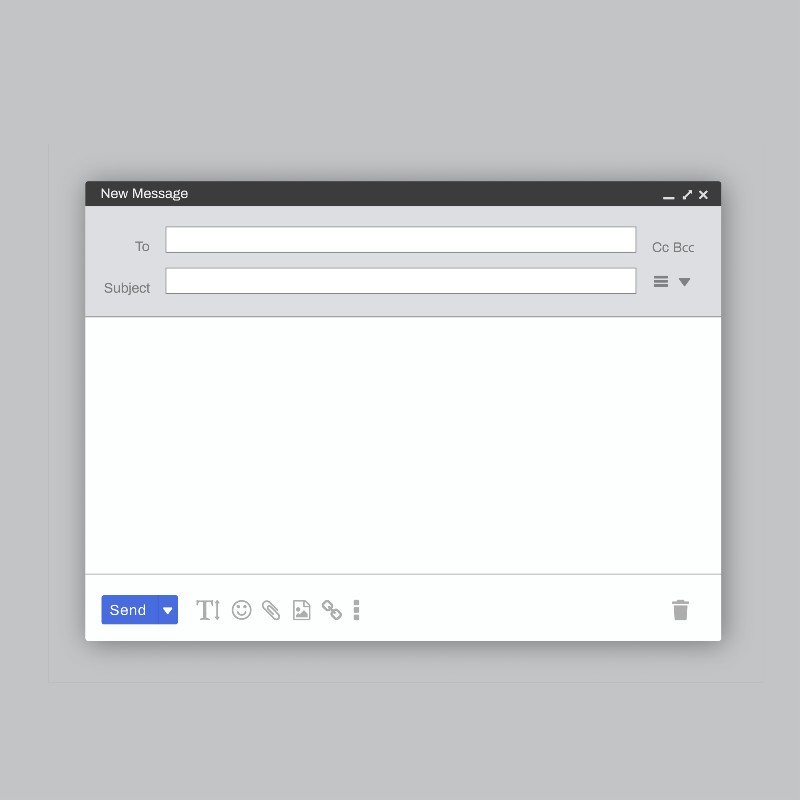Email Deliverability vs. Open Rate: How to Ensure Your Emails Don’t End Up in The Spam Folder.
Email marketing is a crucial part of any company’s marketing plan. There is no successful large-scale business without a successful email marketing campaign. According to the survey, email had a median return on investment of 122%, four times more than any other marketing strategy’s ROI. On average, email marketing delivers a $38 return on investment for every $1 spent.
However, if your emails don’t reach your subscribers’ inboxes, or most subscribers don’t open them, don’t expect success or a high ROI. The primary reason for these is your emails getting stuck in the spam folder, so in this article, we’ll help you ensure your emails don’t end up there.
What is Email Deliverability?
Email deliverability is the successful arrival of your emails to your subscribers’ inboxes. The key word here is deliverability.
Email delivery and deliverability are frequently confused terms. Even though many might use these terms interchangeably, they could signify two distinct things. You don’t just want your email to be delivered to your subscriber, but you want it to arrive in their inbox, not get stuck in the spam or blocked email folder. You want your email to get good inbox placement. That’s the main goal for email deliverability.
What is the Email Open Rate?
Email open rate is a metric for email marketers that measure the percentage of customers who opened your email campaign out of the total number of recipients. To calculate it, you have to divide the unique number of subscribers that opened your emails by the total number of emails you sent and then multiply it by 100. You should also take bounced emails out of the calculation – the emails that couldn’t be delivered to recipients.
What Can Decrease Your Email Deliverability?
When discussing email deliverability, you need to start thinking like an ISP (internet service provider) because passing through ISP’s gateway determines whether your email will be deemed spam or delivered to subscribers’ inboxes. Different factors can decrease your email deliverability.
1. Low sender’s score
One of the critical elements of successful email marketing is the sender’s reputation. Your IP address is rated by service providers based on a variety of factors. These include the number of spam complaints you get, the number of inactive or inaccurate addresses in your email list, whether or not your domain is included on any industry blocklists, etc. A score of less than 70 can be regarded as poor. Anything above 80 indicates a strong sender reputation.
2. High bounce rate
A high bounce rate can affect your email deliverability too. Bounce rate is the number of emails that couldn’t be delivered because of incorrect email addresses or the full inbox of the recipient. There are two different kinds of bounce: hard bounce and soft bounce.
A hard bounce happens when the email address is incorrect or non-existent. A soft bounce is a temporary problem usually caused by a full inbox. A high bounce rate can mean two things: you either don’t keep up with your email list and don’t clean it often or send emails to customers without their consent. None of which will positively affect your email deliverability.
3. Subscribers’ negative response
If subscribers receive your email and mark it as spam, it indicates they’re not interested in hearing from you. ISP can pick up on this quite easily and declare your emails as spam, negatively affecting your deliverability.
4. Spammy emails
You must avoid spamming emails at all costs because they can significantly impact deliverability. Spam filters are getting smarter each day. They look for information that violates the regulations of email providers. Filters utilize algorithms to spot spammers’ terms and phrases, improper headers, and large files. Therefore you should be especially cautious when using spam-triggering words.
What Makes Your Email End Up in the Spam Folder?
Other than all the things we’ve already mentioned above, there are a couple more reasons why your email might end up in a spam folder.
Misleading subject lines
Misleading subject lines negatively affect subscribers’ impression of you, and it’s also against the law to intentionally deceive someone with your subject line to get them to open your message. According to a Litmus and Fluent survey, more than half of respondents said they’d been fooled or deceived into opening a commercial email with a disingenuous subject line.
Your HTML does not meet the standard.
Using HTML isn’t obligatory, but emails with it generally do better than the plain text ones. So if you’re planning on using it, you need to learn best practices first.
- Maintain a modest image-to-text ratio.
- Don’t use typefaces that are difficult to read.
- Keep your HTML code as simple and tidy as possible.
- Use a width of 600-800 pixels as a maximum.
How to improve email deliverability and ensure that your email won’t end up in a spam folder?
Now that you know what can damage your email deliverability, it’s time to learn how to improve it and ensure that it gets delivered to your subscriber’s inbox.
1. Keep your email list clean.
Although having an extensive email database can seem appealing, it’s not always the best choice. Less can be more in this situation. Your sender’s reputation might suffer if you repeatedly send emails to many inactive or unresponsive subscribers, severely impacting your email deliverability.
Regularly deleting invalid emails and reconfirming dormant subscribers can help you clean up your list.
2. Start sending out emails in small batches first.
If your IP address has a bad reputation, a message is less likely to be delivered successfully from it. To validate your IP, you must warm up your email account. You must start by sending emails in tiny batches and refrain from sending several emails at once when sending to a new email list. Once subscribers begin opening your emails and ISPs begin to trust your IP, you may progressively increase the number of emails sent.
3. Make sure to have an easy unsubscribe option.
One email marketing best practice is to make it simple for customers to unsubscribe from your emails should they decide they no longer want to receive them. Your emails might become annoying, and they might even mark them as spam when they are no longer interested in your content and can’t readily find the unsubscribe option. So be sure to provide that choice. Both sides will profit from it.
4. Provide double opt-in confirmation.
Double opt-in confirmation is required to ensure that consumers use legitimate email addresses with access to their inboxes. Additionally, you can ensure that only those interested in your information, goods, or services make it into your email list. These subscribers are more likely to interact with your content, positively affecting your deliverability.
5. Ask your subscribers to add your emails to their whitelist.
When you send welcome emails to new subscribers, instruct them to whitelist your emails. Simply put, you’re asking your subscribers to let their email providers know that you don’t send spam. Subscribers can be sure they’ll keep receiving the emails they signed up for in this way. If your email is included on many subscribers’ whitelists, it will enhance your sender’s reputation and boost your overall inbox delivery rates.
While we hope all these methods will help your emails arrive at the right place and increase your open rates, email marketing can get tricky and may call for the help of experienced marketers and brilliant copywriters. If so, reach out to us today. At Internet Marketing Geeks, we’re happy to direct your marketing efforts in the right direction and help your business grow and succeed!







